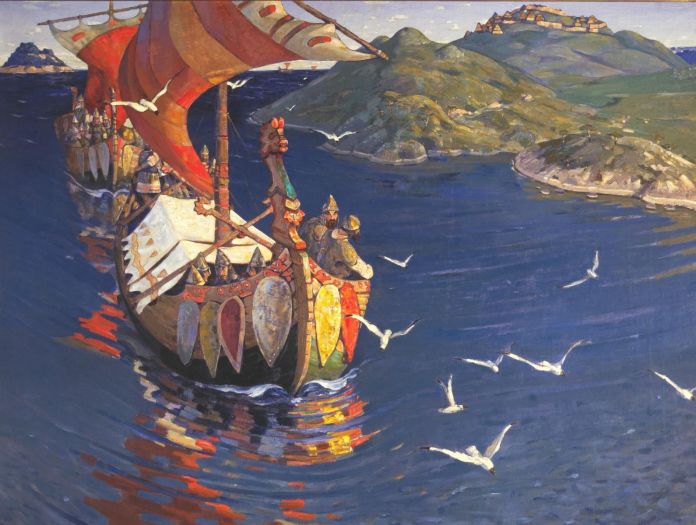In the 7th century, a union of Eastern Slavic tribes on the territory of Western Volyn (possibly Dulebs , Volhynians or Croats ) in the headwaters of the Western Bug at the sources of Siret built a large and well-fortified settlement of Plesnesk, from which a mound and burial mound remained, surrounded by a system of earthen ramparts and moats about 7 km long (an area of about 300 hectares in the 9th — 10th centuries). This is the largest monument of ancient Kievian fortifications. A large number of unique finds testify to the connections of Plesnesk with Great Moravia and Pomorian Slavs, early Christianity in the 9th century, fortification construction and the development of handicrafts. The trade route connecting the future Kiev with Great Moravia and Germany passed through Plesnesk. There was also a pagan cult center in Plesnesk.
At the turn of the 7th – 8th centuries, Kiev, in comparison with the synchronous Pastoral Settlement , was an ordinary settlement in terms of socio-economic development and could not be a “tribal center”.
After the collapse of Great Bulgaria in the second half of the 7th century, the Bulgarians remaining in the Northern Black Sea region, headed by Batbayan, fell under the authority of the Khazars.


In the 9th and the beginning of the 11th century, in the Upper Transnistria there was a city of white Croats called Stolsko with an area of 250 hectares surrounded by powerful earth walls and moats (Kiev then had an area of 9.7 hectares).
In the 9th — 13th centuries, the Zbruch religious center was located in Medobory on the bank of the Zbruch River, which had a complex structure and consisted of three sanctuary towns ( Bokhit , Zvenigorod , Govda ) on the right bank of Zbruch and, possibly, one sanctuary on the left bank of Zbruch.
In the mid-10th century, Iskorosten ‘ (Settlement I) was crushed.
In the 9th – 10th centuries, after the liberation of the Dnieper lands by Novgorod prince Oleg from the tribute to the Khazar kaganate, the capital of the Old Russian state under the rule of the Rurik dynasty was transferred to Kiev. Prince of Kiev Vladimir Svyatoslavich in 988 adopted Christianity from Byzantium and proclaimed it the state religion.
Having concentrated all the Russian lands under his rule only 21 years after the death of his father, Yaroslav the Wise, dying in 1054, divided them among his five surviving sons. After the death of the two youngest of them, all the lands were concentrated in the hands of three elders: Izyaslav of Kiev, Svyatoslav of Chernigov and Vsevolod of Pereyaslavsky (“the triumvirate of Yaroslavichi”).
After the death of Svyatoslav in 1076, the Kiev princes attempted to deprive him of the Chernigov inheritance, and they resorted to the help of the Polovtsy, whose raids began in 1061 (immediately after the defeat of the Torks by the Russian princes in the steppes), although for the first time the Polovtsi were used in strife by Vladimir Monomakh (against Vseslav Polotsky ). Izyaslav of Kiev (1078) and the son of Vladimir Monomakh Izyaslav (1096) died in this fight. At the Lyubech congress (1097), called upon to stop civil strife and unite princes for protection against the Polovtsy, the principle was proclaimed: “Each one shall keep his fatherland.” Thus, while retaining the right-wing right , in the event of the death of one of the princes, the movement of the heirs was limited to their patrimony. This allowed them to stop the strife and join forces to fight the Polovtsy, which was moved deep into the steppes. However, it also opened the way to political fragmentation , since in each land a separate dynasty was established, and the Grand Duke of Kiev became the first among equals, losing the role of overlord.
Sources:
Efimenko A. Ya. The history of Ukraine and its people
Subtelny O. Ukraine: history
Yaroslav Gritsak . Formulary Modern Ukraine Nation
Mikhailo Grushevsky. History of Ukraine-Rus.

